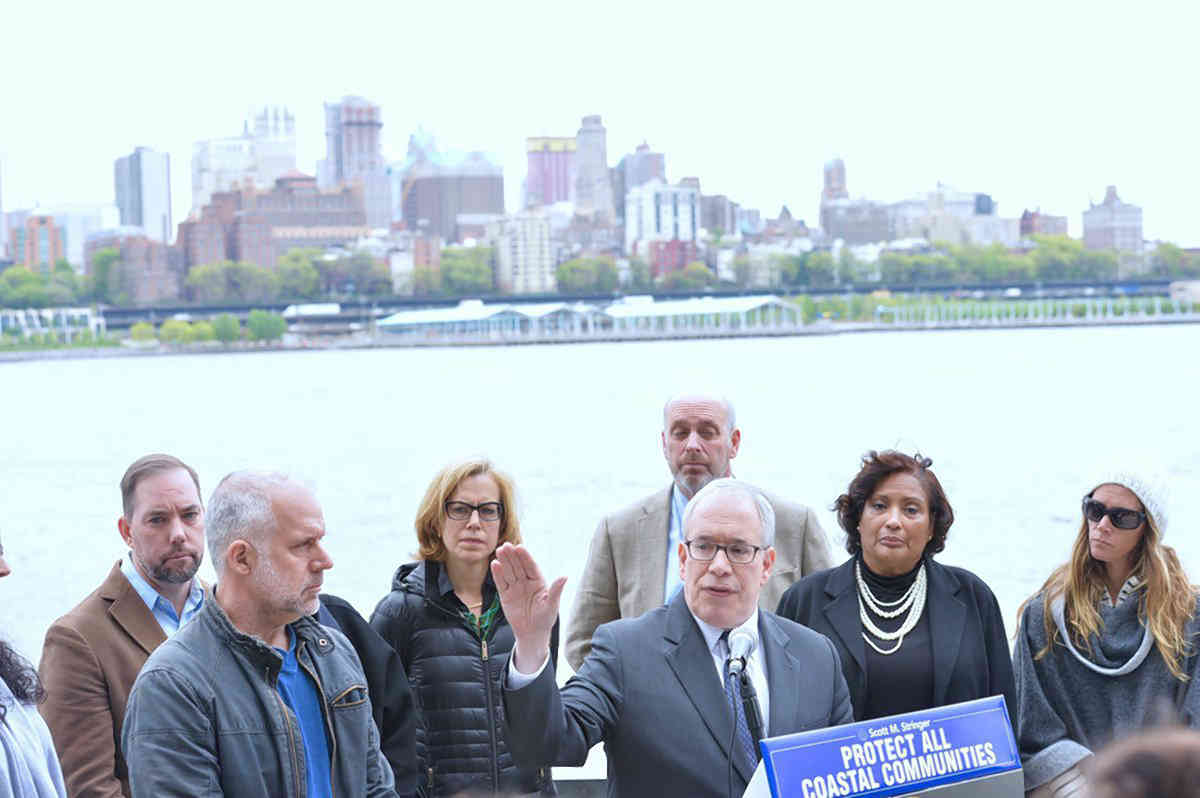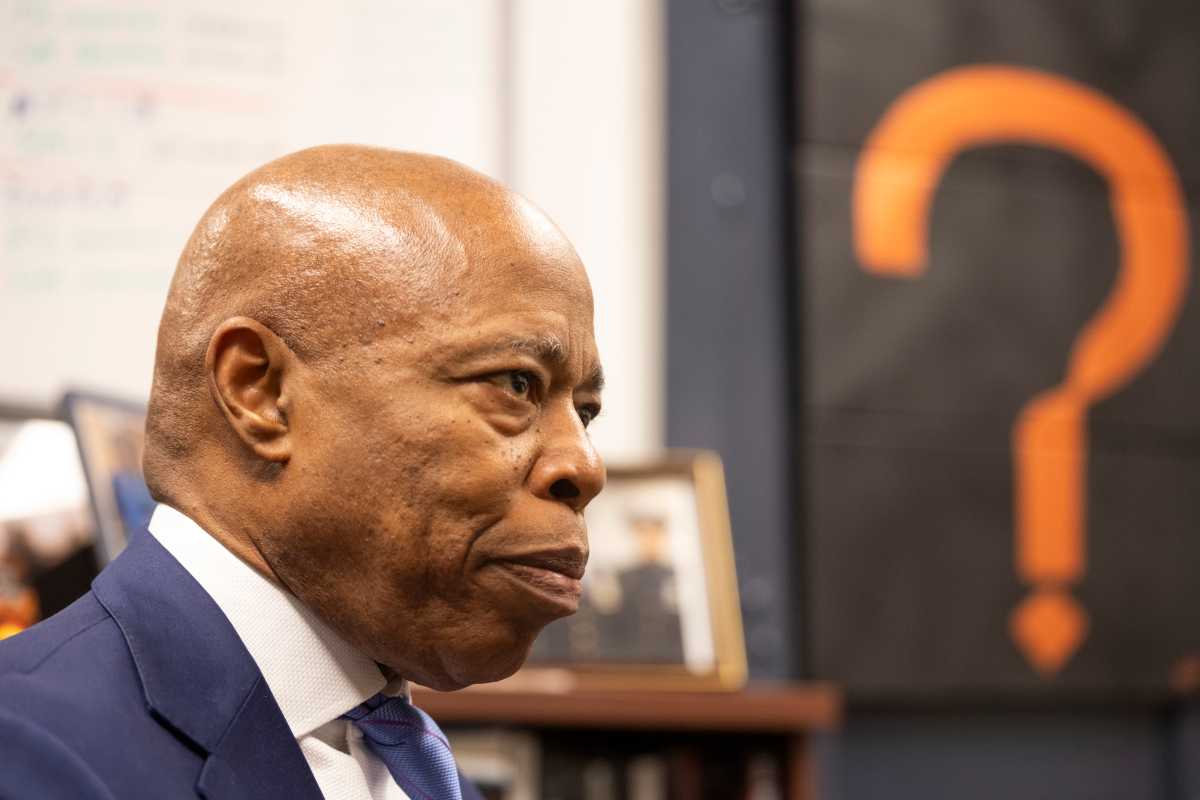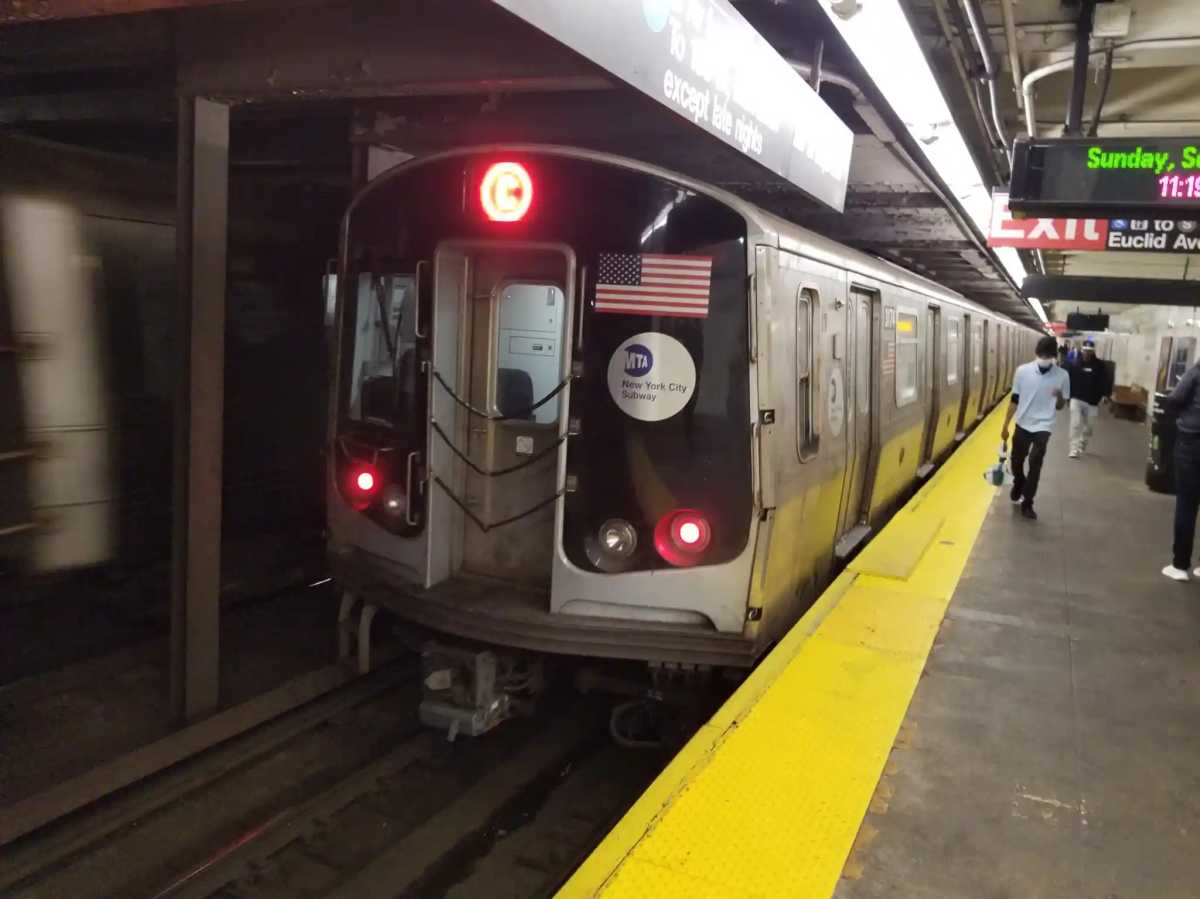He wants the city to open the flood gates.
New York’s top money man blasted city leaders for failing to spend enough on storm-proofing flood-prone neighborhoods.
A new report released by Comptroller Scott Stringer details the sluggish pace that city officials have taken in allocating funds to protect low lying communities from future storms. Stringer called the need for swift, extensive action “a moral obligation” at a May 9 press conference announcing the report.
“Lives are at stake, and the horizon is not 20 or 30 years,” said Stringer. “Any politician who talks about 20-, 30-, or 50-year plans isn’t matching the urgency of the moment. Time is running out.”
Most egregiously, Stringer said the city has failed to appropriate almost half of the federal funds earmarked for protecting shoreline communities over the last six years.
“After Superstorm Sandy, New York City received $14.7 billion to spend on recovery and future resiliency,” he said. “Six years later, New York City has only spent 54 percent of that money.”
The $14.7 billion was allotted to the city after Superstorm Sandy, during which 35,000 people lost power in the borough and seven Brooklynites died, according to a city study.
Stringer warned storms like the one that rocked the northeast in 2012 would become more frequent.
“Scientists now estimate that Sandy-like flooding could be a one-in-five-year event by mid century,” he said.
Large portions of the flood-proofing money, which was detailed by the Federal Government for specific uses, has thus far gone unspent, according to Stringer.
“We’ve managed to spend only 20 percent of the FEMA dollars earmarked to repair our local hospitals,” he said. “We’ve only spent 14 percent of $417 million allocated for coastal resilience projects.”
Leaders have also been slow to spend funds meant for the city’s housing authority, which Stringer called “unbelievable.”
“Of the $3 billion allotted for NYCHA, only 41 percent has been spent, leaving public housing residents dangerously exposed,” he said.
Stringer attributed the slow pace of spending to the challenges of federal “red tape,” and the nature of government construction projects, but called on city officials to fundamentally rethink the processes.
“We are in this line of work to do what is hard, especially when it is right,” he said. “Which means that our current approach, across the board, is too slow. We have begun to accept that projects cannot or will not move.”
Spending money faster would be an “economic imperative,” according to Stringer’s report, as every dollar spent on flood mitigation would save $6 in future disaster costs, largely due to the fact that $101 billion in property value is located in the most flood-vulnerable areas in the city.
Officials needed to accelerate the pace of investment, demanded Stringer, who characterized the city’s coastline vulnerability in no uncertain terms.
“This is an emergency,” he said. “We’re here today to sound the alarm.”

























